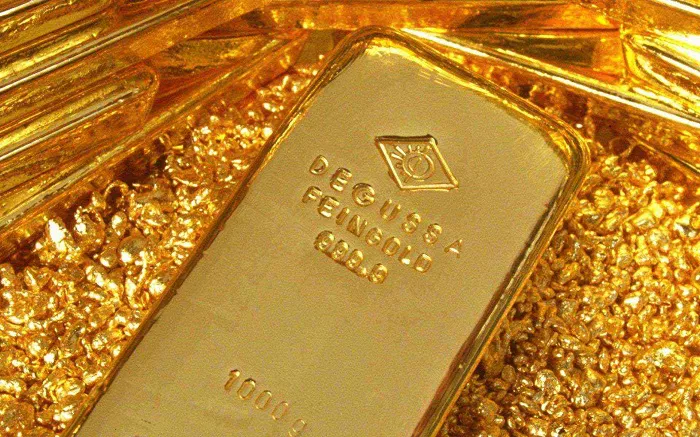The prices of gold and silver are influenced by a complex interplay of factors, including global economic conditions, inflation rates, currency fluctuations, and geopolitical events. Traditionally, these precious metals have been sought after during times of crisis as a hedge against inflation and currency devaluation. However, the recent decline in their prices has raised questions among investors regarding the stability of these assets and the factors contributing to their downturn.
As of late 2024, both gold and silver prices have dropped significantly from their previous highs. For instance, gold prices fell from around $2,000 per ounce in early 2023 to approximately $1,800 per ounce by the end of 2024. Silver has experienced a similar trend, decreasing from about $30 per ounce to around $22 per ounce during the same period. This article will analyze the underlying reasons for this decline, examining at least seven key factors affecting the gold and silver markets.
Factors Contributing to the Decline in Gold and Silver Prices
Strengthening U.S. Dollar
One of the most prominent factors influencing the prices of gold and silver is the strength of the U.S. dollar. Both metals are priced in dollars, meaning that a stronger dollar makes them more expensive for investors using other currencies.The U.S. Dollar Index (DXY), which measures the dollar’s value against a basket of foreign currencies, has shown considerable strength in recent months, rising due to robust economic data from the United States. For example, strong job growth and an increase in consumer spending have led to a more favorable economic outlook, prompting investors to shift their focus toward dollar-denominated assets. As the dollar appreciates, demand for gold and silver decreases, leading to falling prices.
Central banks around the world, particularly the Federal Reserve, have been aggressively raising interest rates to combat inflation. Higher interest rates increase the opportunity cost of holding non-yielding assets like gold and silver, making interest-bearing investments more attractive.For instance, when the Fed raised interest rates by 0.75% in September 2024, the immediate impact on gold and silver prices was negative, with both metals experiencing sharp declines . The prfurther rate hikes in the coming months adds to the downward pressure on precious metal prices as investors seek higher returns in fixed-income securities .
Decrlation Expectations
Gold and silver have historically been viewed as hedges against inflation. However, recent economic indicators suggest that inflationary pressures may be easing.
The Consumer Price Index (CPI) showed a decline in inflation rates, with year-over-year inflation falling from 6.5% to 4.0% in early 2024 . As inflation fears subsimand for gold and silver as protective assets diminishes, leading to lower prices. Moreover, if inflation continues to stabilize, the urgency for investors to seek refuge in precious metals may decrease further .
Market Sentiment and Ihavior
Market sentiment plays a crucial role in determining the prices of gold and silver. When investors feel confident about economic prospects, they tend to move their funds away from safe-haven assets and into equities or other higher-risk investments.
For example, in 2024, the stock market saw a significant rally, with the S&P 500 rising sharply. This bullish sentiment led to a decline in interest for gold and silver, as investors prioritized potential gains in equities over the perceived safety of precious metals . Such shifts in investor behavior can lead tial price fluctuations in the gold and silver markets.
Geopolitical Stability
Gold and silver prices often rise during times of geopolitical uncertainty, as investors seek safe-haven assets. However, recent geopolitical developments have resulted in a sense of stability, diminishing the demand for these metals as protective investments.
For instance, improved relations between major world powers and a decrease in military conflicts have led to reduced demand for gold and silver as hedges against geopolitical risks . As tensions ease, investors may become less inclineprecious metals, further contributing to the decline in prices.
Technological Advancements and Industrial Demand
Silver, in particular, has significant industrial applications, especially in electronics, solar energy, and other high-tech sectors. Recent advancements in technology and increasing production efficiency can impact the demand for silver.
As industries adapt and find alternative materials or improve recycling methods, the demand for silver may decline. For example, the growth of alternative energy technologies that do not rely heavily on silver could reduce industrial demand, putting additional downward pressure on silver prices .
Supply Dynamics and Mining Output
Changes in amics can also significantly influence gold and silver prices. Factors such as mining output, production costs, and geopolitical stability in mining regions can impact the availability of these metals in the market.
For instance, if mining companies face disruptions due to labor strikes or geopolitical instability in key mining regions, this can lead to supply shortages and higher prices. Conversely, if production increases significantly due to technological advancements or favorable mining conditions, it could lead to oversupply and lower prices .
Conclusion
The decline in gold and silver prices can be attra combination of factors, including a strengthening U.S. dollar, rising interest rates, decreasing inflation expectations, shifts in market sentiment, geopolitical stability, technological advancements, and supply dynamics. These interrelated elements illustrate the complexities of the precious metals market and the various influences at play.Investors must remain vigilant in monitoring these factors, as the dynamics of the gold and silver markets can change rapidly. While gold and silver have historically been seen as safe-haven assets, the current economic landscape suggests a need for a diversified investment strategy.
Related topics:
- How to Determine if a Necklace is Real Gold: A Full Guide
- Understanding Gold on MT4: A Comprehensive Guide
- Understanding Gold by the Ounce: A Comprehensive Guide


